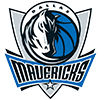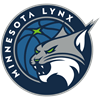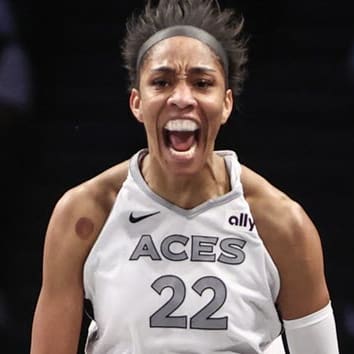2024 WNBA Fantasy Rankings: Draft Cheat Sheet
The WNBA season tips off May 14, and season-long fantasy managers can shift their focus toward drafts now that training camp has begun. A better idea of rotations could come into focus based on preseason play, but it's never too early to strategize for the decisions to make when on the clock.
Rookies like Caitlin Clark have dominated headlines this spring following a record-breaking women's college basketball season. But first-year players have historically struggled to carve out much playing time due to the quick turnaround between the NCAA Tournament and the start of the WNBA season. Limited roster spots available in a 12-team league that carries just 144 players creates difficulty, too.
However, there's no shortage of talent around the WNBA, and fantasy managers will have plenty of choices to make on their draft day. To help guide your decisions, check out some of RotoWire's tools and draft strategy below. Subscribers can use the Discussion feature at the bottom of the page to ask specific questions they may have ahead of their drafts.
Helpful Tools
RotoWire WNBA Fantasy Rankings
2024 WNBA Fantasy Bust Candidates
2024 WNBA Fantasy Breakout Candidates
WNBA Week 1 Training Camp News
WNBA Week 2 Training Camp News
Fantasy WNBA Tips
Know Your League Settings
It sounds easy enough -- draft the best real-life basketball players who will tear it up on the court this season. For the most part, this is a good rule of thumb, but there are several other factors to consider when constructing your fantasy roster.
First, ESPN Fantasy Women's Basketball exclusively runs Head-to-Head Points leagues with daily lineups. The standard scoring settings are as follows:
- Point = 1 Fantasy Point (FP)
- Rebound = 1 FP
- Assist = 1 FP
- Three-Pointer Made = 1 FP
- Steal = 2 FP
- Block = 2 FP
While ESPN allows custom scoring settings this year, notice that the standard settings don't include any negative points for turnovers. This means that in standard leagues, fantasy managers should always start a player who has a game, as there's no downside to that decision. Commissioners looking to add additional intrigue may add some negative scoring, so be sure to check the league settings before drafting.
Have a Draft Road Map
There aren't many worse feelings in fantasy sports than entering a draft room while feeling unprepared. Managers can avoid this by skimming rankings ahead of time, but especially for those new to fantasy WNBA (welcome!), it's important to have a plan in place for when the draft begins.
While ESPN has added the ability to update scoring settings this year, positions in starting lineups aren't able to be changed. That means your roster will comprise of the following positions:
- 2 Guards
- 3 Forwards/Centers
- 1 Utility Spot
- 3 Bench
- 1 Injured Reserve
Because of the way that starting lineups are structured, I usually like to finish my first three rounds with approximately two forwards/centers and one guard. This can change based on how the rest of the draft room is making their selections, but I generally find it to be a good rule of thumb to target at least one forward/center within the first three rounds. I'll also take what's given to me and try not to reach on picks based on position. But especially with daily lineups, it helps to have plenty of frontcourt options to make sure you're starting your most talented players every week. There seems to be plenty of depth at the guard position in this year's draft, so there are still a number of solid backcourt options available in the mid-to-late rounds.
If you're in a league with people you know, try to anticipate the players they could target, especially early on. If a league mate closely followed this year's college basketball season and is a big Caitlin Clark fan, she may go off the board in the first round (and a case can be made for that selection). However, that doesn't mean that you need to reach on a player like Clark to spite the other manager. Instead, adjust your plans to account for that possibility. If a manager selects Clark or another player earlier than expected, there are still plenty of solid first-round options available, such as Arike Ogunbowale, Napheesa Collier and Sabrina Ionescu. These players are proven options, and fantasy managers shouldn't shy away from selecting established veterans instead of targeting the upside that this year's rookie class brings.
Check the Early-Season Waiver Wire
Unlike the NBA, which generally has abundant information and speculation ahead of the regular season, WNBA coaches tend to keep their rotations closer to the vest before the regular-season opener. A prime example of this is Aerial Powers, who averaged 24.5 minutes per game over her first two seasons with the Lynx before averaging just 9.8 minutes per game over 20 appearances with Minnesota last year. She's on a new team this year, but there was minimal indication that her role would decrease so drastically in 2023. There are occasions when players are hampered by an injury, but in general, if a player seems to be on the outside of the rotation early in the year, they may stay that way.
However, this also means that players who flew under the radar during training camp and the preseason may end up handling prominent roles. It's important for fantasy managers to be alert over the first few days of the season so they can target undrafted players who could provide plenty of fantasy value throughout the year.
Not All Injuries are Created Equal
While some players, like Satou Sabally, have already been ruled out for extended periods to begin the season, plenty of other players have received encouraging injury updates. However, there are still plenty of instances when a player still needs to be labeled with an injury due to some uncertainty about whether they'll be available for the regular-season opener. Players with the little red letter next to their name in draft rooms can tend to get overlooked, but there can be value to be found by reading the player's most recent note. In many instances, a player may be dealing with a relatively minor injury or recovering from an offseason injury that has limited them in training camp.
I generally try to draft as close to Opening Night as possible to have the most possible information available, but fantasy managers who draft early can find plenty of value in the players who may carry residual injury tags ahead of the regular season. Some examples of these players heading into 2024 are Chelsea Gray, Kelsey Mitchell, Brionna Jones, Diana Taurasi and Shakira Austin.
Check Lineups Diligently
There have been plenty of instances in playing fantasy WNBA when I've faced a manager with more talent on their team, but I emerge with the win because some of their available points were left on the bench. Typically, top players will remain in the lineup constantly, which is a good rule of thumb. However, matchups can be won and lost based on whether some players who are usually on the bench are put into the starting lineup when star players have the night off.
There will certainly be times when a late injury update leads to an inactive player in a starting lineup, but there are many instances when fantasy managers can simply start a player with a game that day while benching a player with a night off. ESPN Fantasy allows managers to set lineups several days in advance, so it's good to try planning out a time early in the week to make sure that they have the most games possible in their starting lineups.








































